Portals in 1998: The Rise and Fall of Excite and Netcenter
1998 was the year of the portal: Excite, Netscape Netcenter, Yahoo, AOL, MSN and others all competing for eyeballs and trying to be sticky. But with so many portals, some inevitably failed.
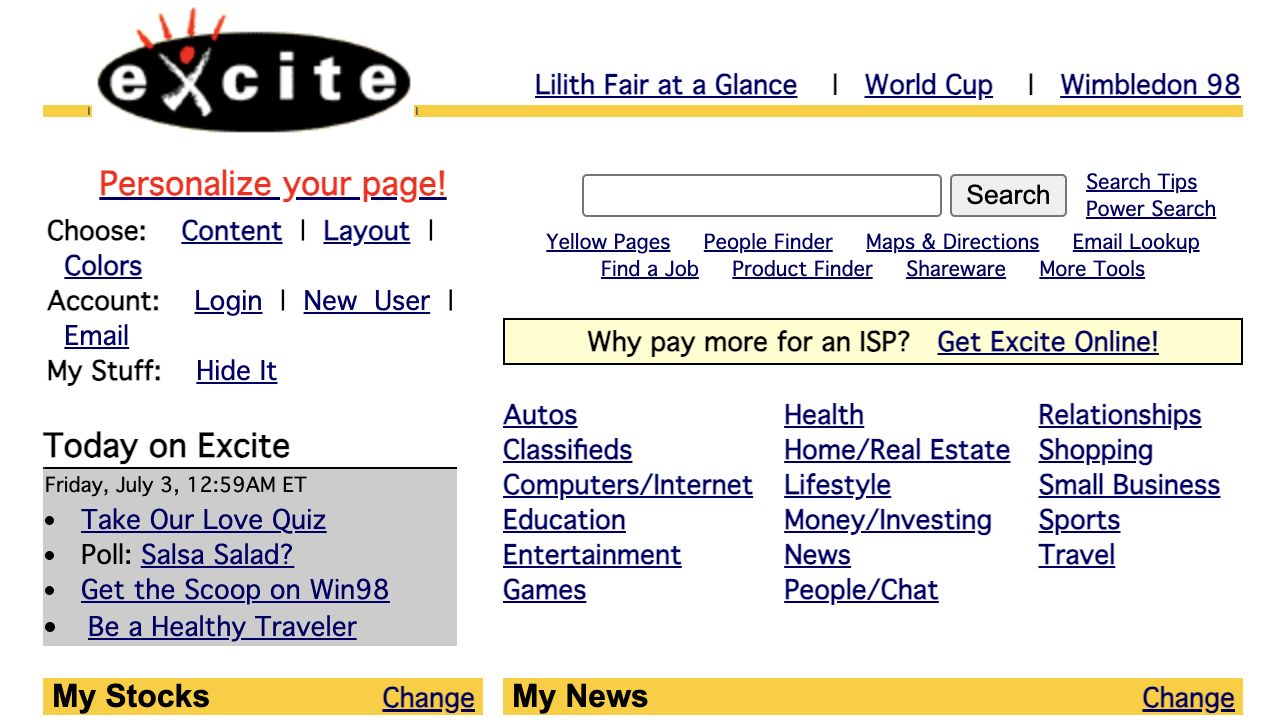
When BowieNet was “pre-launched” on his main website at the end of June 1998, commentators saw it as an attempt to “creatively up the ante in the portal war,” as Beth Lipton wrote in a CNET report. “Large Net gateway sites such as Yahoo and Excite seek to be the home page for as many users as possible,” she added.
Portals were certainly the biggest internet story of 1998. In November of that year, an entire episode of The Internet Cafe, a tv show hosted by Stewart Cheifet, Jane Wither and Andrew DeVries, was devoted to portals. In the introduction, DeVries gave this explanation of what a portal was.
"It's a place that people will come to first when they go onto the internet. Hopefully it's a place that catches a lot of traffic and keeps people coming back by providing different services. Kind of like what AOL was before the web took off — AOL was your one stop, inclusive place."
It might seem strange that the largest websites of 1998 wanted to emulate the pre-web, walled garden version of AOL — but it was all part of the internet gold rush. The dot-com boom was accelerating and online advertising was already big business on the Web. So the more users you attracted, the more money you made. Even internet companies that weren't primarily in the content and consumer services game — like Netscape, which was a browser and enterprise software company — jumped into the portal business. Its version was called Netcenter; and it was a replica of Yahoo and Excite.
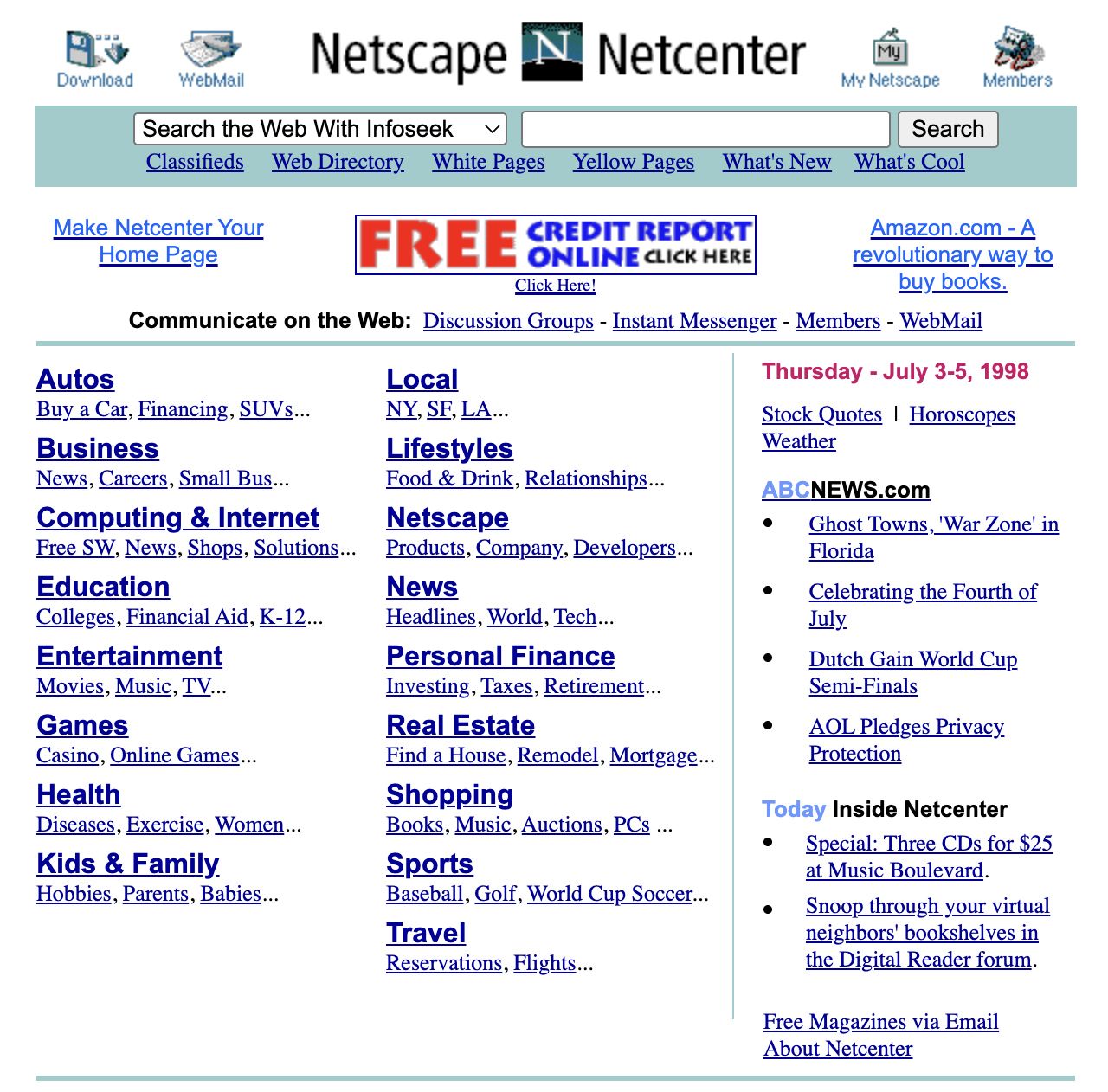
Later in the show, Cheifet interviewed Netscape's Mike Homer, who ran Netcenter. Homer kept using the word "members" instead of "users" (which was the typical way startups referred to people who visited their sites). Calling visitors "members" emphasized to Wall Street and advertisers that Netscape had a captured audience — not just random web traffic. Membership also involved registration, which allowed Netscape to collect demographic data and offer personalization features (stocks, weather, news). This in turn allowed Netscape to deliver targeted ads, as Homer explained:
"If we're able to get somebody to sign up for Netcenter, then they become a member — we know a little bit about them, and then we're able to offer them more tailored services, so the user services are better. On the other hand, of course, the more people that come in, the more frequently they use the site, the more advertising opportunity there is. And if those happen to be people that are members, then we know enough about them to present custom advertising to them and things like that."
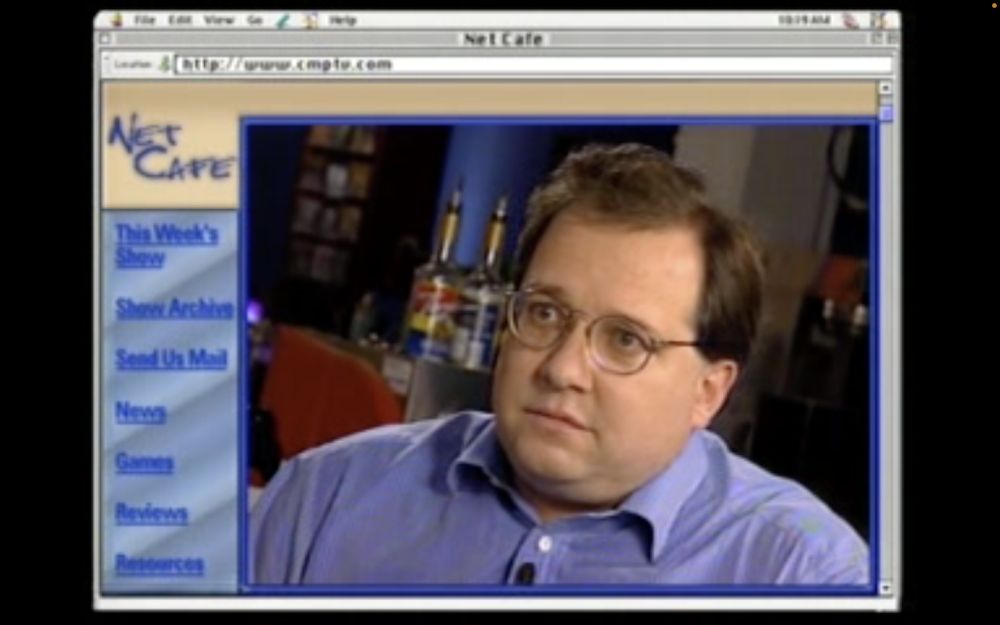
During the interview, Homer tried to position Netcenter as mostly a Netscape-made product. But the reality was that Netcenter's search, directory listings, and much of the content aggregation were actually supplied by Excite — the result of a partnership between the two companies announced in May 1998.
Excite, The Innovator
In a Wired profile published on 1 September 1998 (coincidentally, the day BowieNet launched), Excite CEO George Bell was presented as a swashbuckling dot-com adventurer. As an Emmy-award winning documentary producer in the 1980s, he’d “tracked down Amazon tribes and scaled Everest.” And now, after two-plus years at Excite, he’d “seen the struggling content publisher become a booming portal with 20 million visitors a month.”
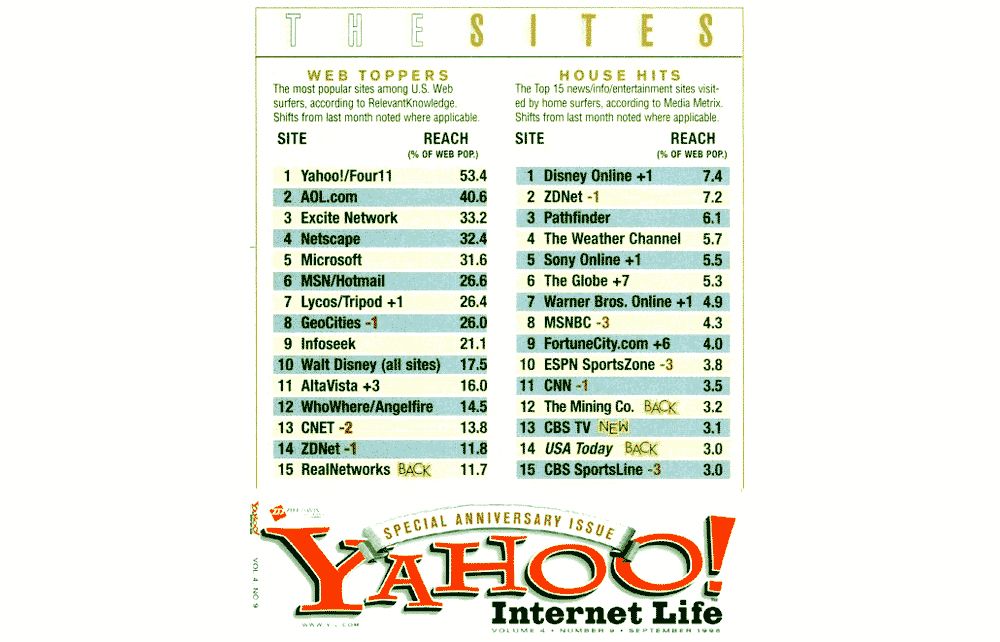
“Portal” was, as Wired put it, “the season's hot buzzword.” Bell was asked, “Are portals to '98 what push was to '97?” His reply: “Portals aren't a delivery mechanism — portals are the Web.” He defined portals as “an efficient starting point that allows you to cut through the confusion of the Web and get to the information you want.”
Excite was engaged in a “land grab” to “become that starting point,” Bell said. The web at this time had a frontier mentality and so land grabbing was an increasingly common metaphor used by entrepreneurs. Fuelled by venture capital and IPOs, companies like Excite had a grow-at-all-costs strategy — with the hope that once they’d grabbed enough virtual land, they could then extract rent from its users. Excite’s goal, said Bell, was to “get big fast” (this became another common maxim in the dot-com era, which the likes of Amazon and Facebook would also follow in years to come).
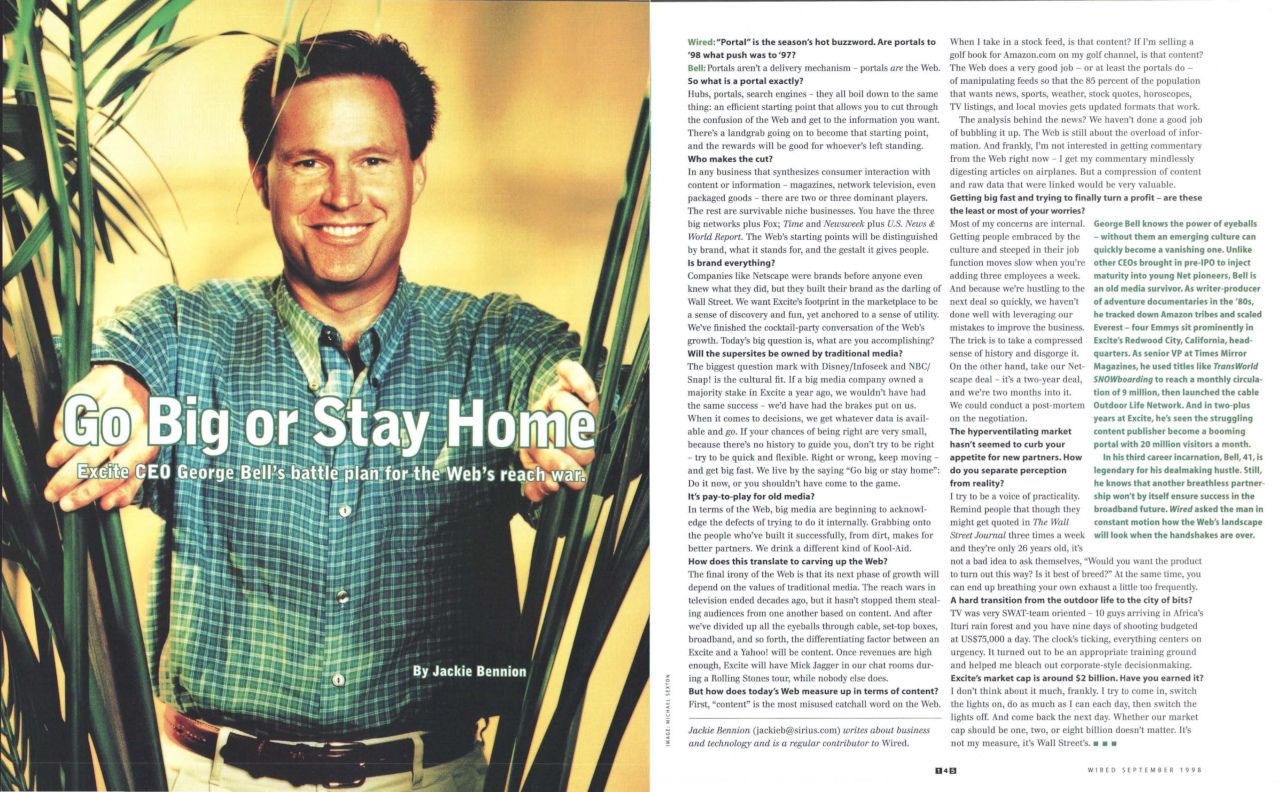
“Stickiness” was another buzzword used by web companies in 1998. Even though Excite’s website was theoretically a “starting point” to explore the web — since its core feature was a search engine — the actual goal was to keep users on Excite.com for as long as possible. That’s because the practical reality of a website of this scale was that it depended on advertising to generate revenue. To keep users on-site, looking at your ads, you needed to have compelling content. As Bell noted, “the differentiating factor between an Excite and a Yahoo! will be content.”
“Once revenues are high enough, Excite will have Mick Jagger in our chat rooms during a Rolling Stones tour, while nobody else does,” Bell told Wired. The implication being that a Mick Jagger chat (and other similarly exciting content) will distract users enough that they’ll ignore the search bar and hang out instead in Excite’s portal.
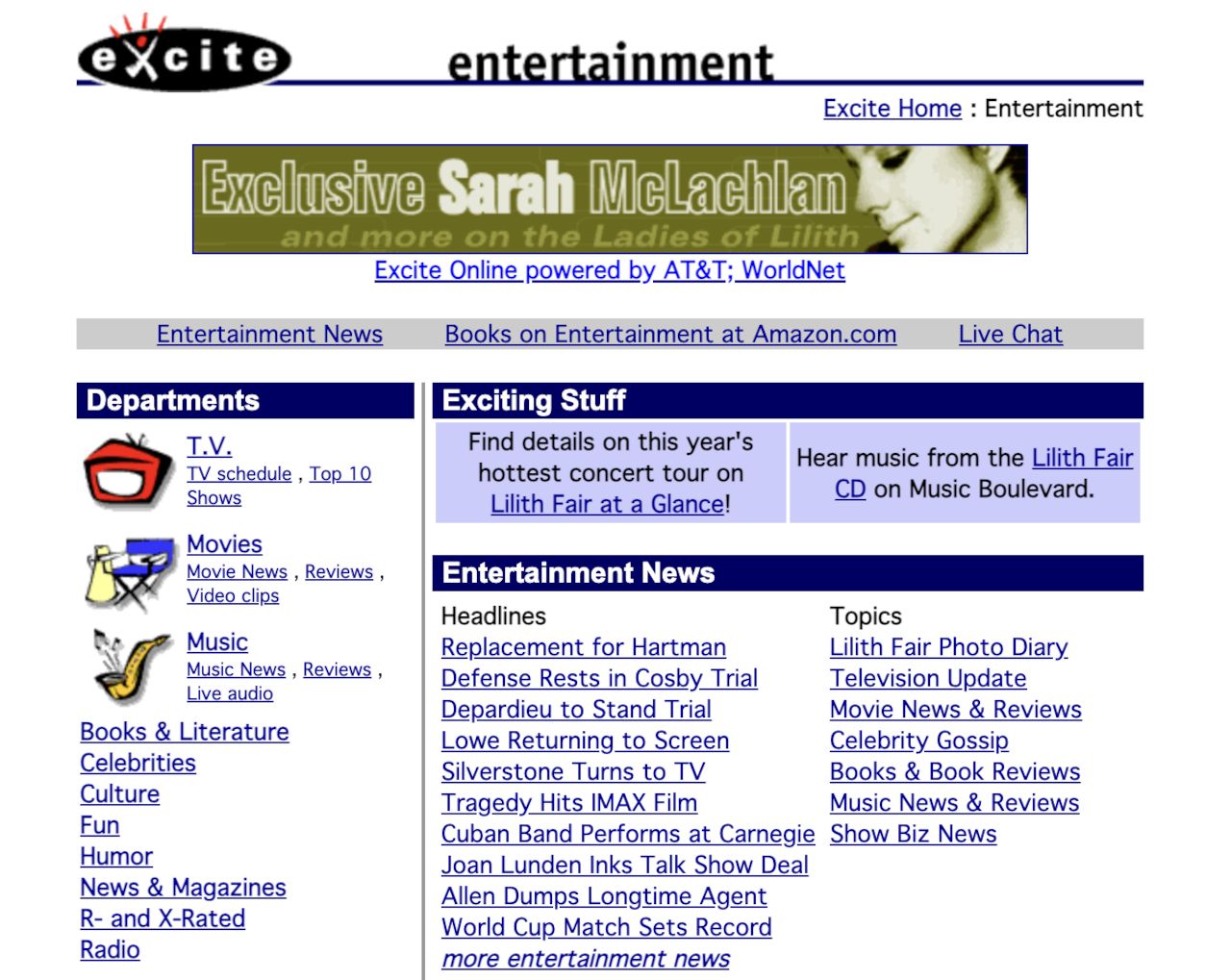
Of course, you needed more than just content to keep users on site. As well as hosting celebrity chats, Excite offered users utilities and applications — such as a free email account and special dial-up internet connection deals.
Looking back on this period in a later podcast, George Bell said that for Excite, Lycos and even Yahoo, “we all fell victim to the idea that we were going to be the mall and the one-stop shop for all of your application needs on the web; and that we would be able to monetize any and all those through advertising, and give away free email.”
What About the Users?
Bell may have viewed portals as like an online shopping mall — and for Excite and its competitors, the object was indeed to sell online inventory in the form of adverts — but users just wanted a home page on the web. As David Lidsky put it in a PC Magazine cover story from September 1998, “More and more, people want an online home base to be a starting point from which they can jump into the wild and woolly Web.”
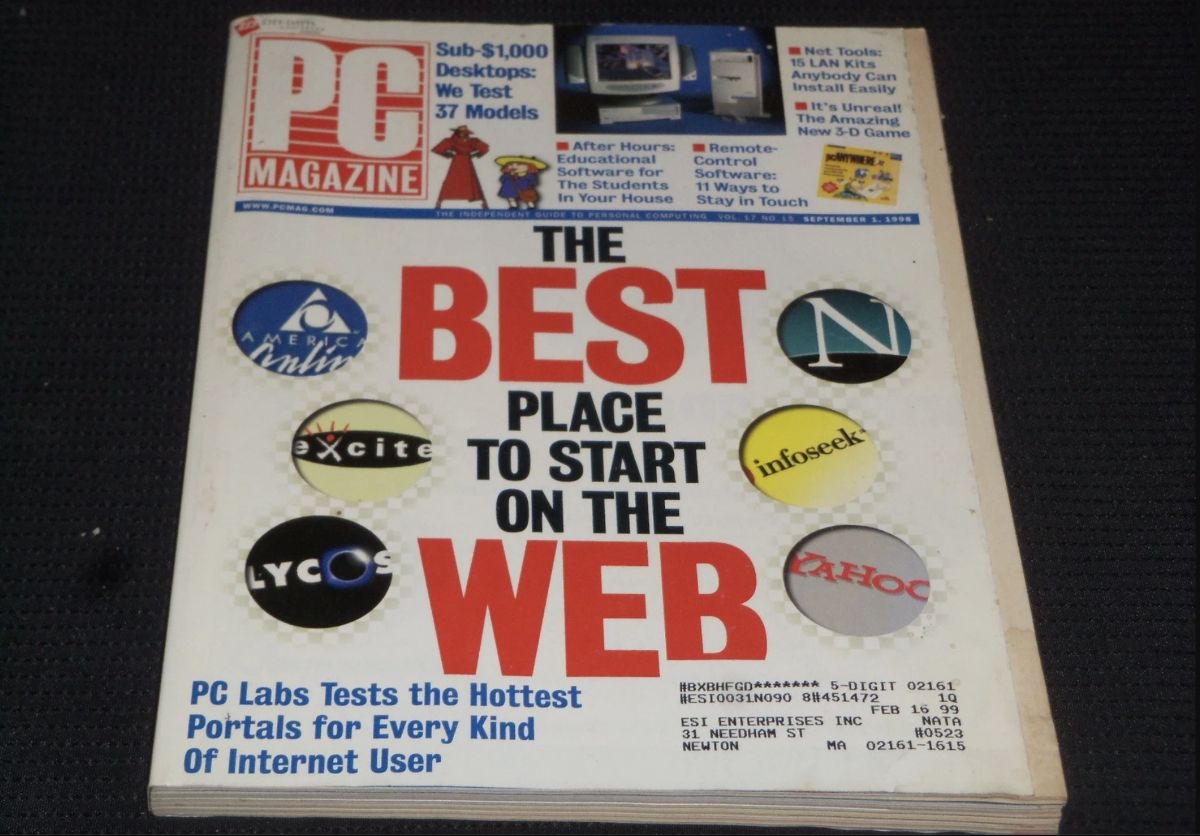
The building blocks of a web portal, according to PC Magazine, were three “C’s”: content, communication, community. Twelve different web portals were reviewed in the article (including AOL, even though PC Magazine didn't regard it as a "pure" Web portal due to its pre-web history). Excite was the “editor’s choice” amongst all these sites.
“We loved being able to create our own home page for Excite, and because it is literally www.excite.com that you customize, the experience is better than other sites that don’t integrate “My” pages into their service as thoroughly,” wrote PC Magazine. The Excite chat and message boards were highlighted in the article, along with its “anticipatory search” and useful navigation.
Personalisation was a developing trend on the web at the time, but it was already a key feature of web portals in the form of the “My” sections. On your Excite home page, you had “My Stocks,” “My Reminders,” “My Chat,” “My Favourite Links,” “My Saved Searches,” “My Movie Listings,” “My Weather,” and so forth. This ability to personalise your page not only benefited users, but enabled the portals to better track user behavior and interests, and hence deliver more targeted content and advertising.
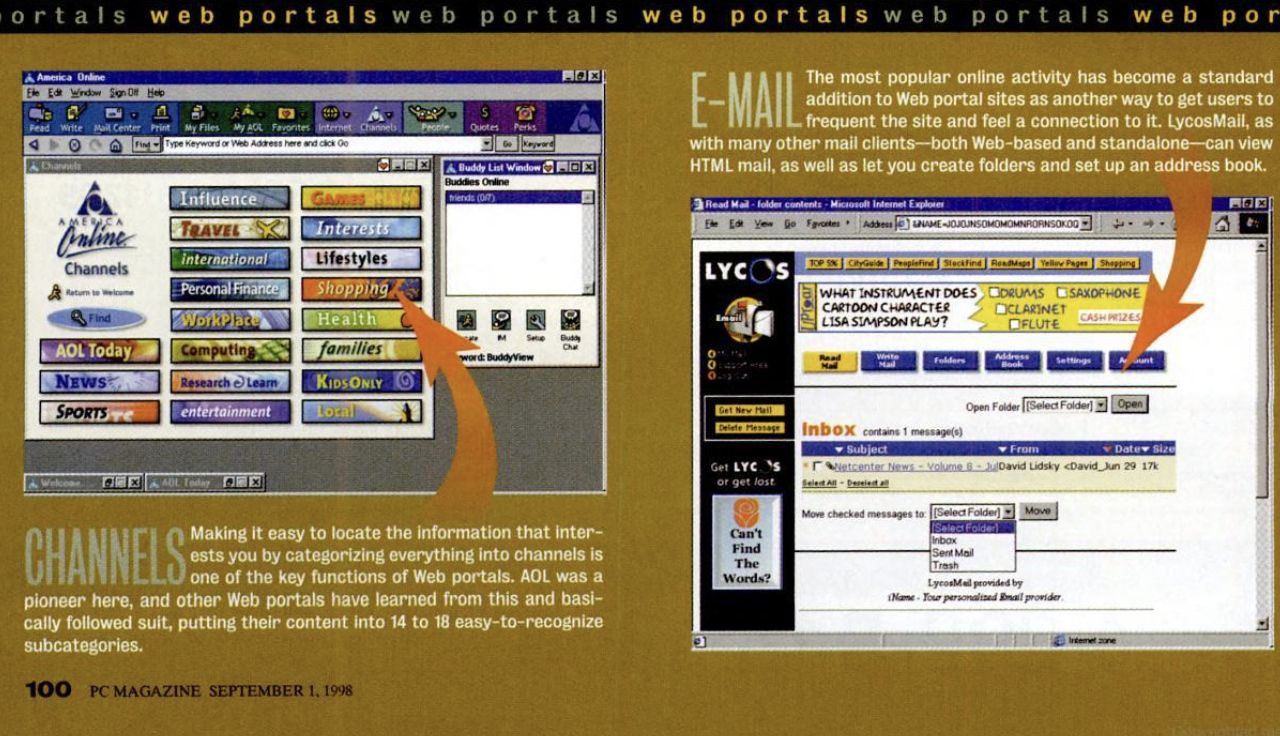
To illustrate how far the web had come in just a few years, GeoCities was also profiled in this PC Magazine feature, since it now had features like email accounts, discussion boards and chat. But its insularity and lack of links to external web sites counted against GeoCities when compared to the more modern portals. “GeoCities is an okay place to settle down on the Web, but those looking to explore should head elsewhere,” concluded PC Magazine.
The Fates of Excite and Netcenter
While Excite was generally seen as the cutting edge of web portals, 1998 turned out to be the zenith of its popularity. Despite all the new features, content deals with the likes of Disney, and acquisitions throughout the year — all of it designed to “get big fast” — Excite was losing money hand over fist. Scale was the name of the game for web portals and Excite was struggling to keep up with its bigger rivals: Yahoo, Microsoft and AOL.
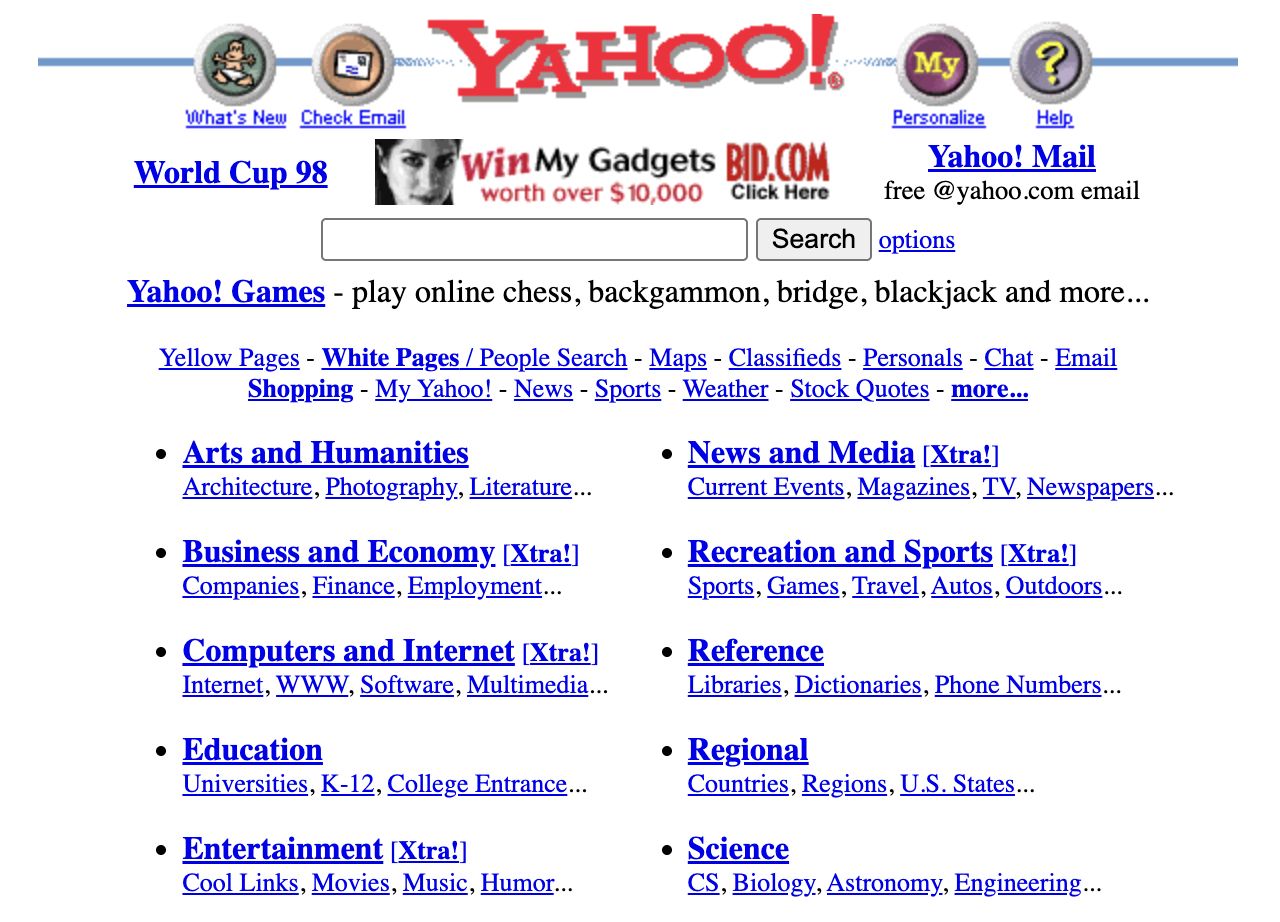
In order to continue competing, Excite was sold to a large cable ISP company called @Home Network in January 1999. It would be the beginning of the end for Excite.
Excite’s scaling problems were indicative of a change in the power dynamics of the still emerging Internet economy. By the fourth quarter of 1998, there was an even bigger story unfolding.
In November 1998, AOL acquired Netscape. The web’s first startup had been vanquished in a few short years by the much bigger and richer Microsoft. Netscape’s once pre-eminent web browser had been losing ground to Microsoft’s Internet Explorer every month, because IE had the massive advantage of being pre-installed on the world’s leading PC operating system: Windows. With the writing on the wall, Netscape sold to one of the very few internet companies that could compete with Microsoft’s scale: AOL.
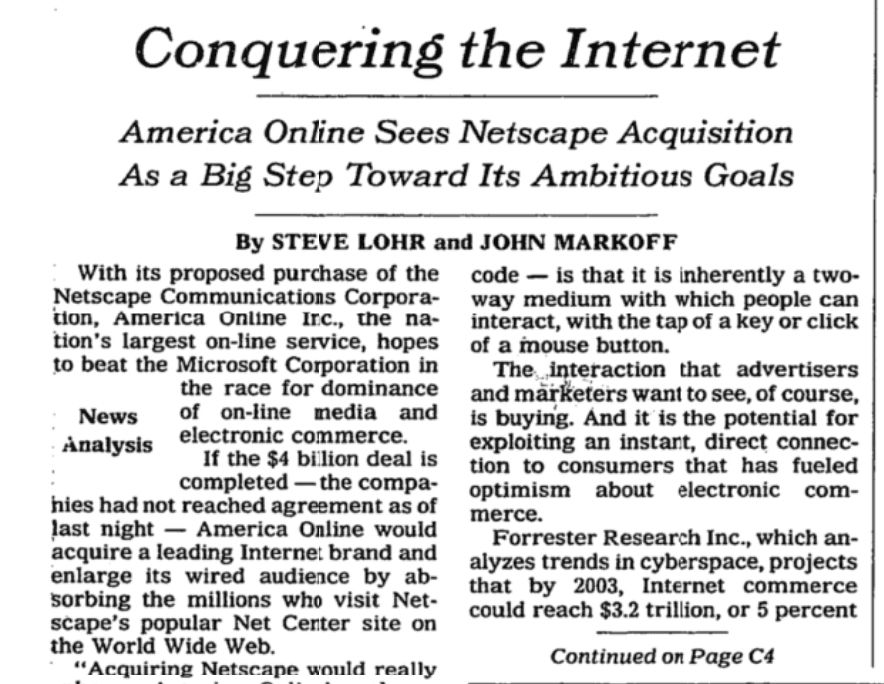
While Netcenter remained as a branded portal for several more years, it's almost completely forgotten now. That said, in 2025 both AOL and Yahoo are owned by the same private equity firm. So, arguably none of the portals lasted — although Yahoo.com and MSN are still among the world's top websites.
A portal, as a one-stop shop website, was a product type very much of its time. Of course, big tech companies still collect eyeballs and aim for stickiness — but today they're most likely to achieve that in apps and across social media products.
Buy the Book
My Web 2.0 memoir, Bubble Blog: From Outsider to Insider in Silicon Valley's Web 2.0 Revolution, is now available to purchase:
- Paperback, US$19.99: Amazon; Bookshop.org
- eBook, US$9.99: Amazon Kindle Store; Apple Books; Google Play
Or search for "Bubble Blog MacManus" on your local online bookstore.